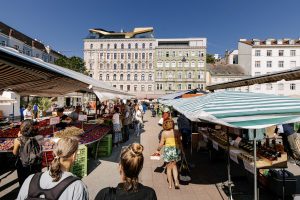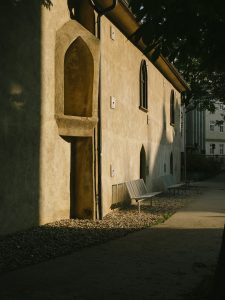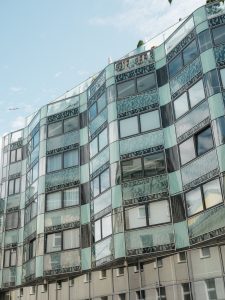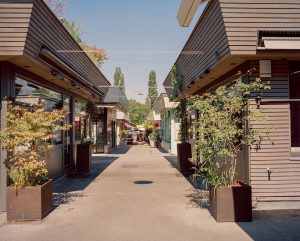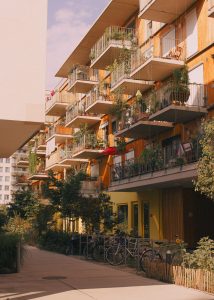Immerse yourself in the “Heartbeat streets” of Vienna
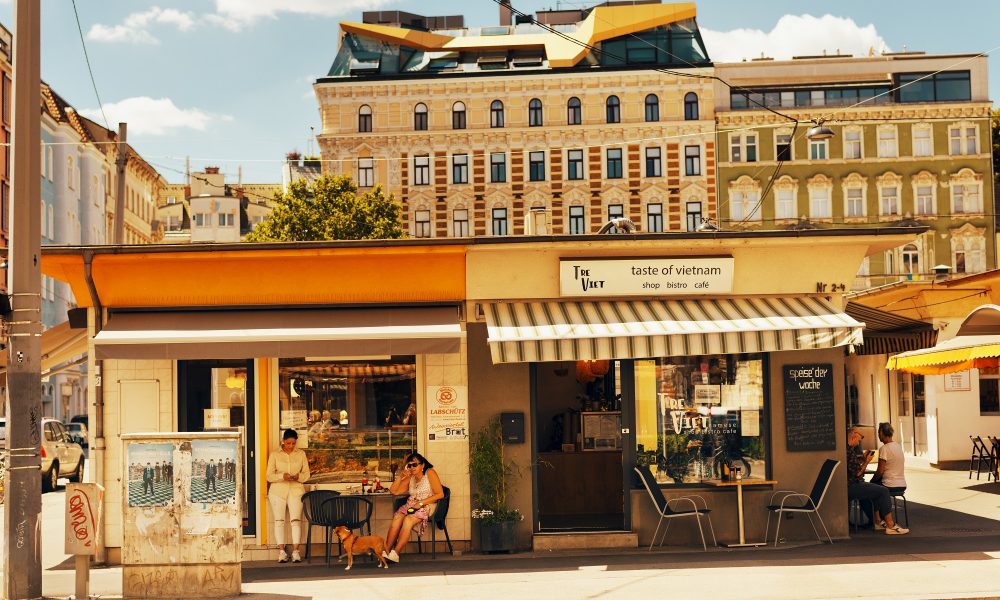
Diversity and unique atmosphere in Vienna’s neighborhoods – the “Grätzeln”
Are you planning a visit to Vienna and feel like delving a little deeper into the city? Away from St. Stephen’s Cathedral, Hofburg Palace or the Giant Ferris Wheel, colorful, diverse Viennese life awaits you. Each district has its own unique atmosphere and incomparable charm. You can even find out what type of neighborhood you are or which neighborhood suits your current mood and plans. And off you go.
What is a Grätzel?
In Vienna, a Grätzel is a district consisting of several alleys that used to form settlements outside the city center and still form a visible unit today. There is usually a market or main square in the middle, which gives the Grätzel its name. The Grätzel have no official boundaries and are not to be confused with the Viennese districts into which the city is divided for administrative purposes.
Here you can stroll past the ensembles of houses, store in small specialty stores, drink coffee, dine in the Schanigärten or simply observe the people who fill the districts with life. You can feel like a real Viennese.
Grätzel diversity in Vienna – an overview
The Freihausviertel in the 4th district is hip and lively, yet still very relaxed. Galleries are lined up next to bars, classic pubs and classy vintage stores. Second-hand fashion was here before it became trendy, as was the coffee roastery. Here you will find the “Third Man Museum”, the Palais Ehrbar with its historic concert hall and a special architectural gem, the hay mill from the 14th century. Schleifmühlgasse leads directly through the Freihausviertel, from Naschmarkt to Wiedner Hauptstraße. The Hotel Erzherzog Rainer is located on this street – an ideal starting point to take a closer look at the Freihausviertel and the Gußhausviertel.
The chic Gußhausviertel is densely populated and lies between Karlsplatz, Belvedere Palace and the main railway station. Many embassies are located here in magnificent Wilhelminian-style buildings and former palaces. Where there was once a foundry (the imperial and royal cannon foundry) is now home to the Vienna University of Technology.
The Karmelitermarkt, a typical Viennese market, forms the center of the Karmeliterviert. A relaxed district where you can feel the Jewish history. Numerous kosher stores, restaurants and facilities exist in harmony with a young and diverse bar scene. Here you will also find the Augarten with the two flak towers or the Crime Museum, an insider tip in a 17th century building with a typical Viennese Pawlatschenhof. The ideal starting point for the Karmeliterviertel is the Hotel Stefanie and the Hotel City Central on Taborstraße.
The Yppenviertel also has a market at its center, the long, multicultural Brunnenmarkt. The stores here have a strong Turkish influence, but there is also Staud’s Pavillon, a typical traditional Viennese company, the Ottakringer brewery and creative new stores. A lively, vibrant neighborhood in Vienna.
The area around the time-honored Meidlinger Markt in the 12th district is still unknown to many. A small, traditional Viennese market where you can indulge in culinary delights
The Kutschkermarkt in the 18th district is also worth mentioning, known for its delicacies and the farmers’ market on Saturdays.
An excursion to Little Paris in the Servitenviertel in the 9th district offers culinary highlights as well as particularly well-kept and well-preserved houses in picturesque alleyways lined with flower stores and pretty little stores around the Servite Church. Here you will find the oldest surviving Jewish cemetery in Austria, the Sigmund Freud Museum, the Liechtenstein Garden Palace and the Strudlhofstiege, Vienna’s most famous staircase.
The Spittelberg is known for its Christmas market, which takes place every year in the charming, cobbled streets. Today, there is no sign of the once disreputable red-light district. The spruced-up Biedermeier houses are home to numerous bars, trendy galleries and studios selling arts and crafts. The Stuwerviertel was also once a shady area. Today, it is not only the Prater that attracts many visitors as an amusement park and Vienna’s green lung, but also the large exhibition center.
If you’ve had enough of the historic districts, it’s worth making a detour to the districts of the future that are just emerging, such as Seestadt, Sonnwendviertel or Nordbahnviertel.
Which neighborhood suits me – today?
The Vienna Tourist Board has put a test online where you can find out which Grätzel is the right one for you. A neighborhood personality test to help you if you’re not quite sure where to start. Try it out!
Headerpicture: Karmeliterviertel © Wien Tourismus, Erli Grünzweil


